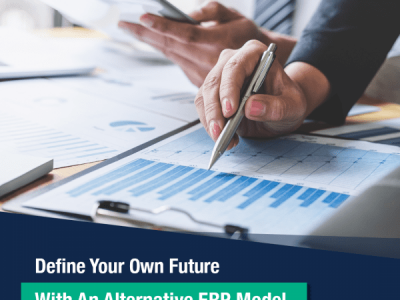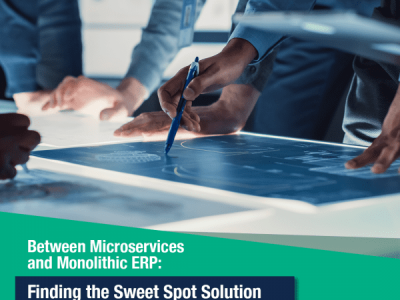
When defining the qualities of an effective ERP solution, the only benchmark that should matter is how the solution resolves customer challenges. While a roster of capabilities and functions may be seductive, none are relevant unless they consistently deliver efficiency.
Too often, customers find themselves stuck with an ERP solution that promised to liberate the workforce and drive change, but in fact requires valuable resources to integrate it with other functions, keep it running smoothly, or simply make it work in the worst cases.
Common Challenges for ERP
- Integrating cloud-based devices and mobile applications. 30% of business leaders believe ERP solutions will be more affected by IoT than any other software type.
- Duplicate or inconsistent data, sapping up resources in order to resolve issues.
- Personalisation or lack or fear of it. Accepting out-of-the-box solutions supported by out-of-the-box processes is antiquated. Every business is unique and ERP must support, not constrain, a businesses value proposition. Many businesses fear to request such customisations as there is a misconception out there that this will create technology lock-ins. This isn’t the case with modern ERP built on a bed-rock that supports multiple layers of ‘code-free’ customisations. On the other-hand others don’t get the opportunity to configure their ERP solution due to the costs involved or their position in the ERP solution’s development sprint pecking order.
Suggesting that not all ERP solutions deliver the digital transformation they claim isn’t so controversial when you consider that, even after 20 or so years of ERP innovation, the humble Excel spreadsheet has yet to be toppled as the tool of choice in many organisations.
From small businesses to giant corporations, it allows workers and clients to record, present and share the information that matters, with the option to add complexity as required. The entry barrier for adoption is negligible – just a little tinkering and experimentation and anyone can create a spreadsheet. The same cannot be said for many ERP solutions, which require staff and stakeholder training across the board.
How your customers are evaluating an ERP solution
- Size – Enterprise, medium or small business solution
- Scope – an end-to-end platform that covers the entire organisation will require a sea change in the business model and day-to-day workflows, as well as data integration from legacy storage. This then becomes a business transformation issue, not just an IT issue.
- Type – a choice between cloud, hosted, or on-premise, with a huge range of options available in cloud-based ERP Software as a Service, Platform as a Service, Infrastructure as a Service.
- Price – Enterprise ERP poses a higher initial cost, whereas software support and updates can increase the total cost of ownership for in-house ERP over time. Post-implementation issues on price are critical when selecting a cloud-based solution, where licensing costs can increase considerably as the business scales without rigorous monitoring of subscriptions, redundancy and duplication.
- Functionality – Core functionalities include mission-critical systems such as accounting, finance, stock management and CRM. But today’s customer wants much more from their ERP software; mobile, role-based ERP applications, advanced predictive stock management features, ‘management by exception’ reporting, intelligent, user-based workflows and so on.
What are Customers really buying?
So let us revisit the fundamentals of ERP to help us elaborate what the future trajectory is likely to be. Quite simply, an ERP solution should facilitate decision-making and enable action within the business. It is a platform that complements existing processes, not the creator of new worlds.
In manufacturing and distribution, for example, ERP software did not invent the Procure to Pay process, but it allowed businesses that had convoluted or intricate paper-based processes in place and substituted them with a digital version, paving the way for Just-in-Time supply chains and so on. The technical innovation enabled a change in human behaviour.
Whereas a paper-based workflow might require regular monitoring and supervision from the select few who understood or implemented the system, ERP software could formalise and democratise those processes, allowing staff and stakeholders at all levels to contribute. The gatekeepers to that system were not replaced, however. Far from it. They were freed up to apply their strategic thinking elsewhere, adding value to the business.
What an ERP solution must do
From the first platforms 20 or 30 years ago to the solution of 2040, an ERP is effective as a means to accomplish the following core functions:
- Record
- Measure
- Control
These are the eternal truths. As misguided as it may be to make any sort of prediction where technology is concerned, the notion that these three core functions will still be in place come 2040 is nevertheless solid. By contrast, the things that organisations will record, measure and control could well change considerably.
With the arrival of 5G onto the landscape, ERP software must soon be able to process lightning fast streams of data from a vast network of mobile devices in real-time. In addition, it will have to support remote teams that are inside and outside the organisation in collaborating on the go. The huge amount of data collected will need to go beyond compiling simple reports. For the investment involved, customers will exert greater pressure on their ERP software to produce valuable Business Intelligence from the data collected.
Beyond these core principles, everything is up for grabs, as it were. The momentum is towards Cloud storage, Edge computing, AI, Machine Learning, IoT and a whole raft of associated buzzwords that illuminate software exhibitions. Yet many organisations will want to remain with mainframe, on-premise solutions.
Digital transformation is a revolution in theory, but a slow sea change in practice. For proof, look no further than the years and decades lost to software solutions that could not even communicate with each other, let alone accomplish a task.
Ultimately, an ERP solution has to enable humans, not defer responsibility for tasks for those further down the line. If the solution requires considerable amounts of ‘human glue’ to hold it together, resources will be diverted away from areas where they can deliver the most value, slowing the business in its ability to scale.
One of the frequently voiced concerns is that as AI and Machine Learning feature more heavily in the ERP proposition, these platforms will eliminate humans from the equation. That again would be a misunderstanding of ERP’s core principles.
The strength humans bring to the organisation is in creativity, building relationships and strategic thinking. These are business qualities, not indulgences, yet too many organisations lock their workforce into repetitive tasks that could be accomplished much faster and more accurately by automated software.
To borrow another analogy, the invention of the driverless car is not about rendering motorists obsolete. It is about freeing up the driver to be productive. Likewise, a best-in-class ERP solution is not a threat to the human workforce. It can keep the cogs turning ‘under the hood’ so that those at the wheel or in the passenger seat can focus on the journey.
Do the bigger ERP platforms satisfy this requirement? Not regularly enough. Too many approach the business problem from a point of complexity, rather than from the simplicity of the solution. Vendors are showing customers how much their solution can accomplish, whereas customers in many cases are trying to convey how little they need.
Above all, no customer wants to spend a fortune on a global software solution that sucks revenue and time out of the business to implement. A tailored software solution, however, that fits the immediate business requirements snugly but allows room to grow, presents a compelling alternative.




